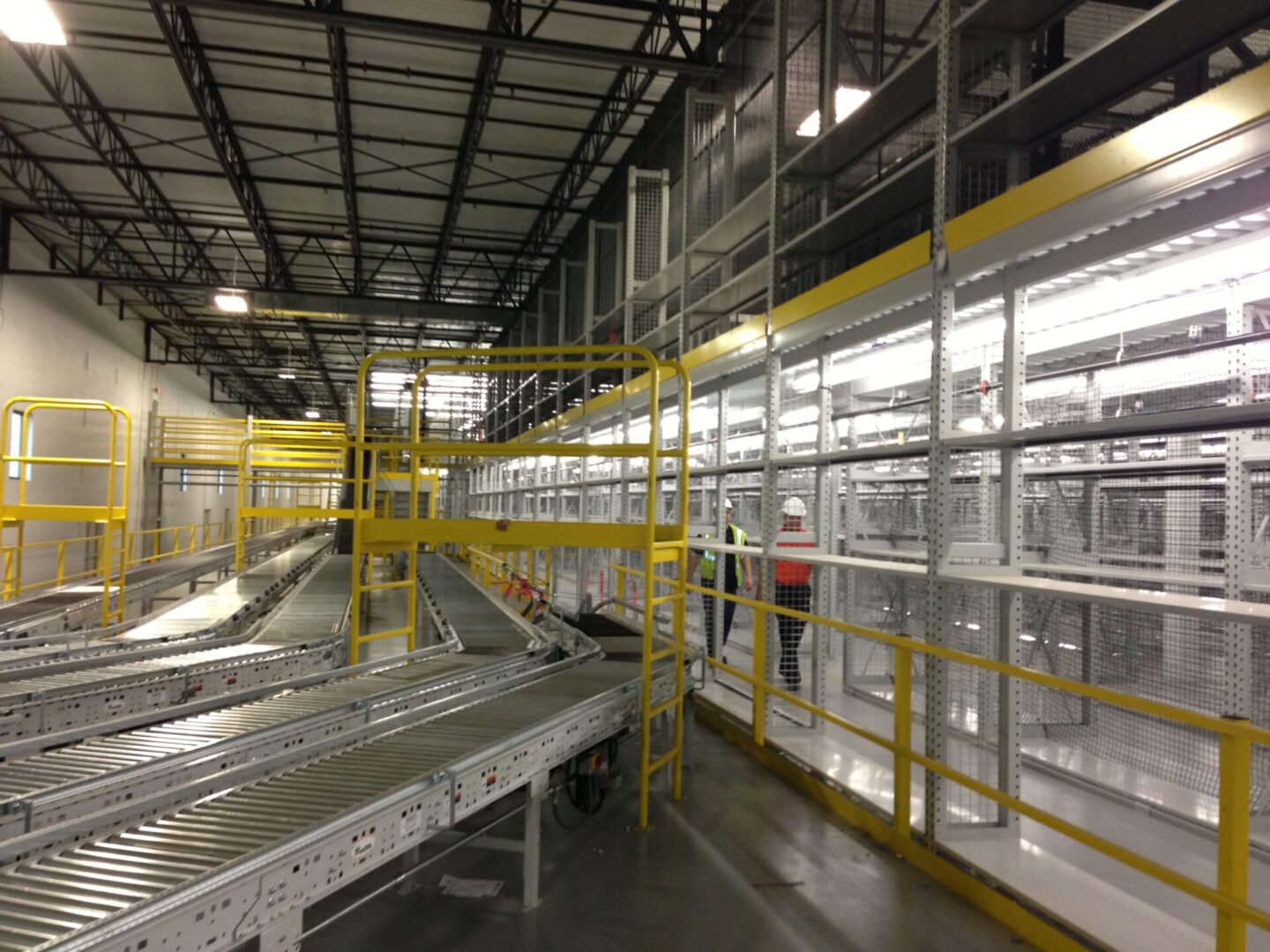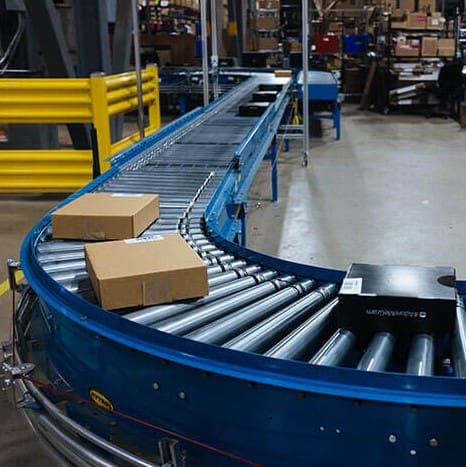Conveyors
Material handling conveyors are mechanical devices used to transport, transfer, and manipulate materials or products within a warehouse, distribution center, manufacturing facility, or other industrial settings. These conveyors are essential for streamlining the movement of goods, reducing manual labor, and increasing efficiency in material handling processes. Here are the key types, features, and applications of material-handling conveyors:
Types of Material Handling Conveyors
Belt Conveyors
-
Description: Consists of a continuous loop of material, typically made of rubber or fabric, that moves over two or more pulleys.
-
Uses: Ideal for transporting bulk materials, packages, and irregularly shaped objects over long distances or inclines.
Roller Conveyors
-
Description: Utilize rollers mounted on a series of frames to move materials along a fixed path.
-
Uses: Suitable for conveying heavy loads, pallets, or containers in straight or curved sections of conveyor lines.
Chain Conveyors
-
Description: Feature a continuous chain loop with attachments to move products along a guided track.
-
Uses: Commonly used in assembly lines, paint lines, and for heavy-duty applications requiring precise positioning.
Slat Conveyors
-
Description: Consists of slats or plates attached to a chain to transport heavy or bulky items.
-
Uses: Suitable for carrying hot or abrasive materials, as well as products with irregular shapes or sizes.
Bucket Conveyors
-
Description: Use buckets attached to a belt or chain to transport bulk materials or granular products vertically or horizontally.
-
Uses: Commonly used in grain elevators, mines, and processing plants for handling materials in bulk.
Screw Conveyors
-
Description: Utilize a rotating helical screw blade to move materials along a tube or trough.
-
Uses: Effective for conveying bulk materials, powders, or granules horizontally, vertically, or at an incline.
Overhead Conveyors
-
Description: Suspended from the ceiling or overhead structure to transport items along an elevated path.
-
Uses: Ideal for transporting items through assembly lines, paint lines, or processes where floor space is limited.
Features and Components
-
Drive Mechanisms: Power sources such as electric motors hydraulic or pneumatic systems that provide motion to the conveyor.
-
Frames and Supports: Structures that provide stability and support for the conveyor system.
-
Belts, Chains, or Rollers: Continuous loops or tracks that move materials along the conveyor path.
-
Pulleys and Rollers: Components that guide and support the movement of belts or chains.
-
Controls and Sensors: Devices for starting, stopping, and controlling the speed and direction of the conveyor system.
-
Accessories: Optional components such as diverters, chutes, guides, and guards to enhance functionality and safety.

Applications
-
Distribution Centers: Sorting, picking, and transporting packages and parcels for shipping and distribution.
-
Manufacturing Plants: Moving raw materials, components, and finished products along assembly lines or between workstations.
-
Warehouses: Handling palletized goods, containers, and bulk materials for storage and retrieval.
-
Food Processing: Conveying ingredients, packaging materials, and finished products in food and beverage processing facilities.
-
Mining and Quarrying: Transporting ores, aggregates, and other materials in mining and quarry operations.
-
Automotive Industry: Moving parts and components between manufacturing processes in automotive assembly plants.
Benefits
-
Increased Efficiency: Automates material handling processes, reducing manual labor and improving throughput.
-
Space Optimization: Utilizes vertical or overhead space, allowing for compact and efficient layouts.
-
Flexibility: Can be configured with various types and accessories to accommodate different materials and applications.
-
Improved Safety: Reduces the risk of manual handling injuries and accidents associated with moving heavy or bulky items.
-
Quality Control: Ensures consistent and reliable movement of materials, minimizing errors and defects in production or distribution.
In summary, material-handling conveyors play a crucial role in modern industrial operations by facilitating the efficient and safe movement of materials throughout the supply chain. With a wide range of types, features, and applications, conveyors are versatile tools that contribute to increased productivity, reduced costs, and improved overall performance.


